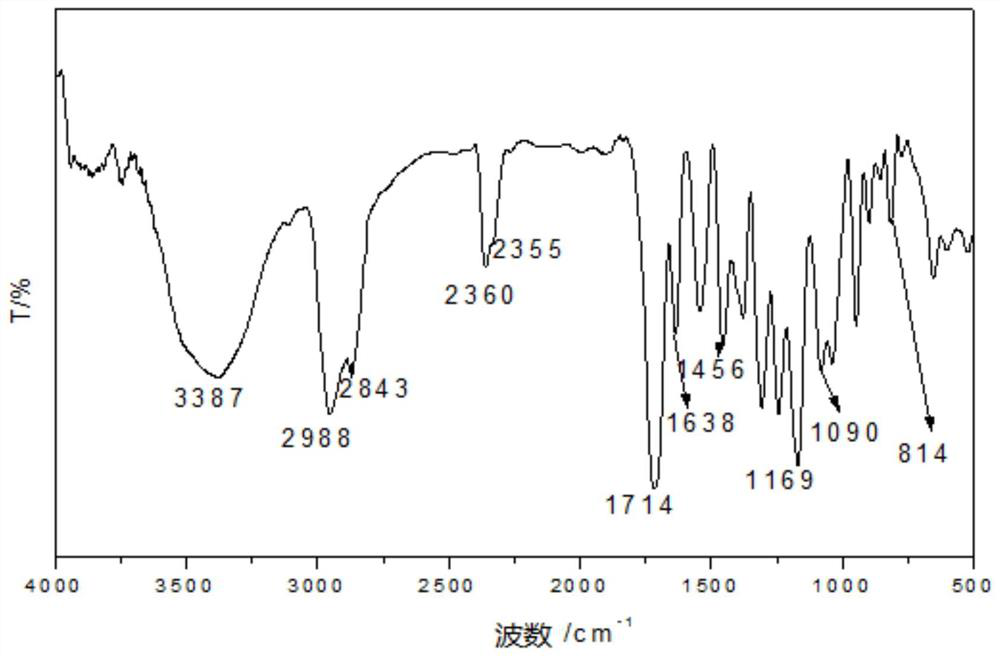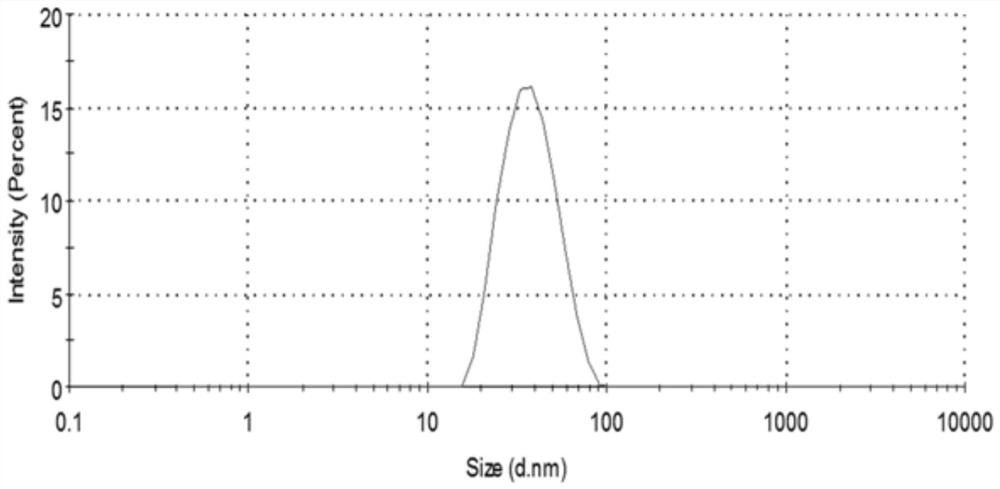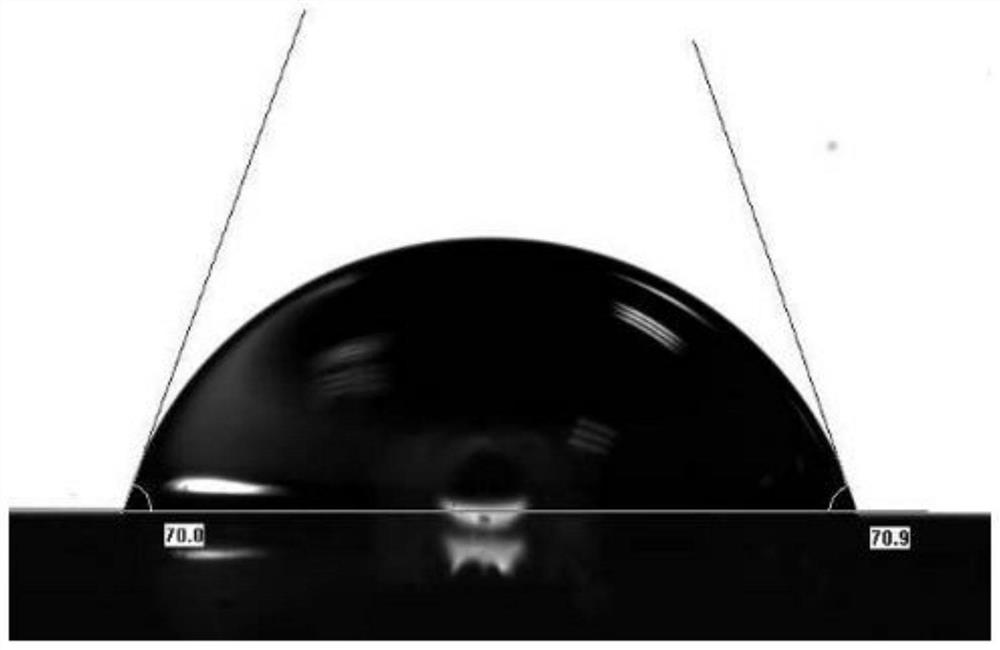A kind of preparation method of cationic waterborne uv polyurethane acrylate self-antibacterial resin
A urethane acrylate, cationic technology, used in the field of urethane acrylate resin materials, can solve the problems of poor thermal decomposition resistance, poor tensile strength of the coating, unstable dispersion, etc., and achieves improved antibacterial properties and short curing time. , the effect of improving tensile strength and high temperature decomposition resistance
- Summary
- Abstract
- Description
- Claims
- Application Information
AI Technical Summary
Problems solved by technology
Method used
Image
Examples
Embodiment 1
[0049] Prepare raw materials according to the mass percentage of the total materials:
[0050] Resin component mass percent (wt.%): isophorone diisocyanate 38.3%, glycerol 7.2%, polycarbonate diol 22%, polycaprolactone diol 8%, polycaprolactone triol 3 %, lactic acid 1.5%, guanidinoacetic acid 1%, BICAT81180.9%, pentaerythritol triacrylate 9.7%, methacrylate-β-hydroxyethyl 0.3%, polyethylene glycol monomethyl ether 0.1%, N-methyl Diethanolamine 4%, photoinitiator 4%.
[0051] In a reactor equipped with reflux, heating and stirring devices, mix the isophorone diisocyanate, polycaprolactone triol, glycerol, BICAT8118 catalyst and solvent in the stated proportion evenly. Raise the temperature to 90°C to 100°C for mixed reaction, and continue the reaction at constant temperature for 3 hours. Under the condition of 60°C to 90°C, add the above-mentioned calculated amount of polycarbonate diol and polycaprolactone diol to the device, and continue the reaction at constant temperature...
Embodiment 2
[0057] Prepare raw materials according to the mass percentage of the total materials:
[0058] Resin component mass percent (wt.%): tetramethylxylylene diisocyanate 35%, glycerol 7.1%, polycaprolactone diol 20%, polycaprolactone triol 10%, polyethylene glycol Alcohol 7%, acetic acid 2.5%, guanidine propionic acid 0.5%, BICAT81080.5%, pentaerythritol triacrylate 5.7%, hydroxyethyl acrylate 3.5%, polyethylene glycol monomethyl ether 0.2%, diethanolamine 1%, N - Benzoylphenylhydroxylamine 2%, photoinitiator 5%.
[0059]In the reactor equipped with reflux, heating and stirring device, the tetramethylxylylene diisocyanate, polycaprolactone triol, glycerol, polycaprolactone triol, BICAT 8108 and Add the solvent and mix well. Raise the temperature to 90°C to 100°C for mixed reaction, continue the reaction at a constant temperature for 3 hours, and add the above-mentioned calculated amount of polycaprolactone diol and polyethylene glycol into the device at a temperature of 60°C to 9...
Embodiment 3
[0064] Prepare raw materials according to the mass percentage of the total materials:
[0065] Resin component mass percentage (wt.%): 16.2% of isophorone diisocyanate, 8.5% of tetramethylxylylene diisocyanate, 10.5% of diphenylmethane diisocyanate, 3.5% of N-methyldiethanolamine, N, N-dimethylethanolamine 1.5%, polycarbonate diol 5%, polypropylene glycol 23.6%, polycaprolactone triol 13%, acetic acid 1.5%, guanidinoacetic acid 4.5%, BICAT8108 0.7%, pentaerythritol triacrylic acid 7% ester, 0.5% polyethylene glycol monomethyl ether, 4% photoinitiator.
[0066] In a reactor equipped with reflux, heating and stirring devices, diphenylmethane diisocyanate, isophorone diisocyanate, tetramethylxylylene diisocyanate, polycaprolactone triol, Mix BICAT8108 and solvent evenly. Raise the temperature to 90°C to 100°C for mixed reaction, continue the reaction at a constant temperature for 3 hours, and add the above-mentioned calculated amount of polycarbonate diol and polypropylene glyc...
PUM
| Property | Measurement | Unit |
|---|---|---|
| viscosity | aaaaa | aaaaa |
| thickness | aaaaa | aaaaa |
| amine value | aaaaa | aaaaa |
Abstract
Description
Claims
Application Information
 Login to View More
Login to View More - R&D
- Intellectual Property
- Life Sciences
- Materials
- Tech Scout
- Unparalleled Data Quality
- Higher Quality Content
- 60% Fewer Hallucinations
Browse by: Latest US Patents, China's latest patents, Technical Efficacy Thesaurus, Application Domain, Technology Topic, Popular Technical Reports.
© 2025 PatSnap. All rights reserved.Legal|Privacy policy|Modern Slavery Act Transparency Statement|Sitemap|About US| Contact US: help@patsnap.com



